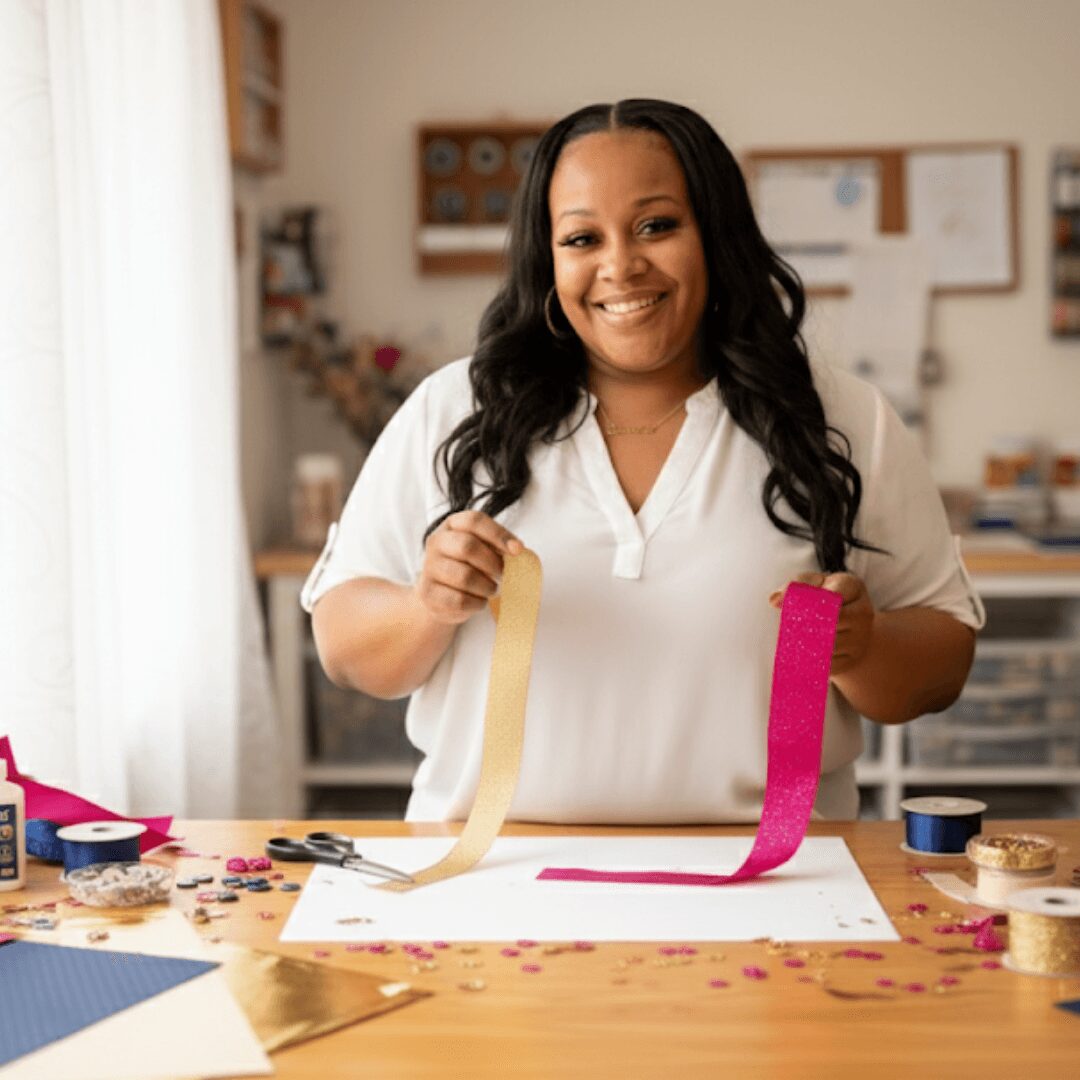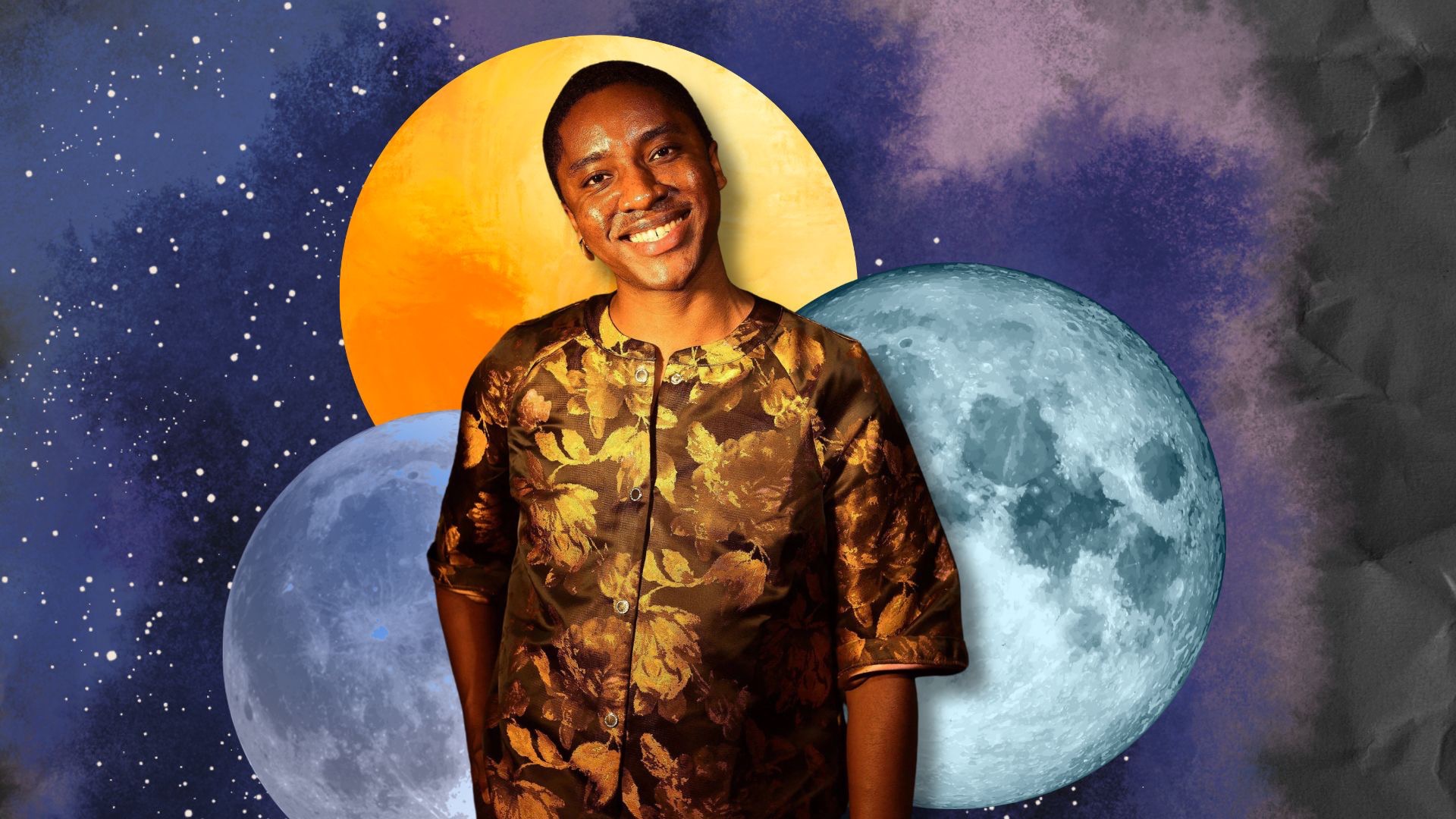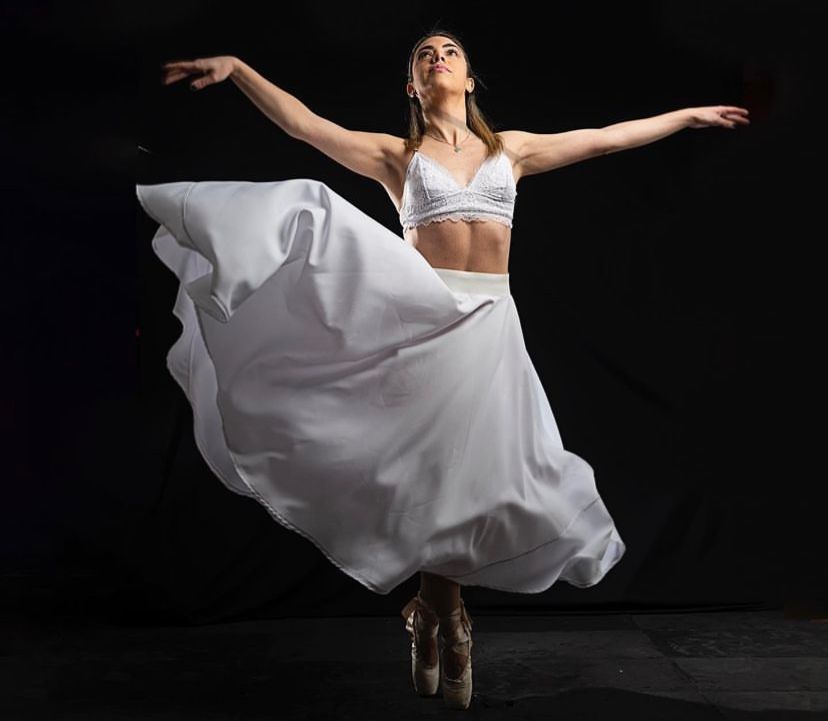We were lucky to catch up with Lihua Chen recently and have shared our conversation below.
Lihua, so good to have you with us today. We’ve got so much planned, so let’s jump right into it. We live in such a diverse world, and in many ways the world is getting better and more understanding but it’s far from perfect. There are so many times where folks find themselves in rooms or situations where they are the only ones that look like them – that might mean being the only woman of color in the room or the only person who grew up in a certain environment etc. Can you talk to us about how you’ve managed to thrive even in situations where you were the only one in the room?
When Lili is in the room—Lili is me—the room is New York.
This question deeply resonates with my current situation and state of mind. I immigrated to New York two years ago, and back then, as my second language, English was not my strength, especially in speaking and listening. So, as I stepped into this ‘new room’ and began to build a life here, I found that everything—from daily essentials to planning and developing my career—required constant adaptation and overcoming obstacles.
In addition to the language barrier, as an Asian woman, I’ve encountered challenges related to race, gender, cultural background, and identity. In this ‘room,’ I became aware of how different every aspect of life was from what I had once known and grown accustomed to. I also realized how rare it is to find people with similar backgrounds and experiences who can offer support and understanding. What should I do in this situation? How can I confront potential biases and continue to move forward? These are the challenges I face at this new stage of life.
However, everything has two sides. While this situation can make one feel isolated, seeing how differences contribute to a unique sense of presence can also be energizing. For me, the excitement of challenges far outweighs any unease. Or perhaps, there is simply no time for unease—there is too much to do.
As an artist, my ability to keenly capture novelty and maintain a constant flow of creativity serves as a remedy for adversity, helping me quickly find my place even amidst potential systemic barriers. Art is a universal language that transcends linguistic boundaries. Immersed in artistic creation, I feel fearless, and through my work, people in the ‘room’ have a faster way to get to know me. This is one of the things I love about New York—art always has the power to captivate and contribute to the community.
Once I overcome the psychological barriers, the rest no longer feels like a significant obstacle. First, I need to ‘keep moving’—no matter my emotional state, I can’t let my actions become lazy or stagnant. I know that creating new work will quickly lift me out of discomfort and frustration, renewing my motivation to move forward. This act of creation isn’t initially meant for anyone else—it’s for myself. Expressing myself sincerely is a way to give myself an outlet during difficult times. And where there is expression, there will naturally be interaction—and with that, a chance to be understood by others.
In the end, the question constantly circles back to the self: how to solve professional challenges during the creative process, to improve, and to finish my work. These are questions I must face on my own. See? There’s so much to do! And besides, we can never predict the complete outcome—one step at a time, because you never know what you’ll encounter along the way. How interesting the unknown is! Taking action is the key.
New York is an expansive stage, rich in opportunities for art and a strong sense of inclusivity for diverse cultures. In fact, you don’t have to be an artist to experience this. Every industry offers its own path to shine. No matter what you do, your voice will be heard when you create and express yourself.
I embarked on a life centered around creation with this very mindset. Over the past two years, I have completed a land art installation on a stretch of open land on Long Island, held two solo exhibitions—“Hi, Strangers” in SoHo, and “Calm Before the Storm” in Greenwich Village—and participated in group exhibitions in Brooklyn and Chelsea. I also joined the “Mystery Mart” art blind box project at the Brooklyn Museum. These exhibitions, especially the group shows and participation in the art project, connected me with artists, curators, staff, and media from diverse backgrounds. All of them are people I met after arriving in New York. Through our works, we got to know each other, share ideas, and connect—our passion for art transcended all barriers. Everyone was incredibly patient. When speaking wasn’t easy, I could write emails; translation apps came to the rescue when listening was difficult. There was always a way to bridge the gap, as long as the artwork remained at the center.
The land art installation on Long Island, titled “A Vision of the World,” is about a three-meter-tall steel sculpture shaped like an eye, open and transparent from front to back. The location was carefully chosen so that the sun replaces the pupil of the eye at sunrise and sunset, emitting a radiant glow. Nature was invited to co-create and became an integral part of the work. In the “Calm Before the Storm” exhibition, I presented a mixed-media work titled Burning, consisting of paired images. The main component of the work is photographic art: I captured close-up shots of flames and then covered the surface of the images with black gauze. The gauze was burned in advance, creating large holes that matched the shape of the fire in the images. This created an optical illusion, making the flames on the image appear as though they could break through the gauze and burn toward the viewer. This piece and “A Vision of the World” reflected the emotions I described earlier—a force that breaks through the darkness.
People often ask me how I persist in making art. The truth is, I’ve never really felt like I was ‘persisting.’ The word ‘persist’ carries a sense of strain or reluctance. When it comes to something you genuinely love, persistence isn’t necessary—you simply do it, naturally and continuously. Face your inner self, find the life you want to live and the things you want to do. Align your actions with what you know—and live it.


Appreciate the insights and wisdom. Before we dig deeper and ask you about the skills that matter and more, maybe you can tell our readers about yourself?
I have been engaged in art creation for over 20 years, with formal training in oil painting. In 2006, I moved to Beijing to fully dedicate myself to artistic creation, and in 2022, I relocated to New York, where I have been based ever since. In addition to being an artist, I am also a freelance writer and have contributed feature articles, essays, and art critiques to radio stations, magazines, and gallery exhibitions.
My creative practice spans painting, video art, and public art, with the choice of medium determined by the thematic needs of each project. I have held solo and group exhibitions in cities such as Beijing, London, Berlin, and New York, and participated in various public art projects. Since moving to New York, I have participated in several group exhibitions in Manhattan and established connections with the local art community. I also held two solo exhibitions: “Hi, Strangers,” supported by the LMCC (Lower Manhattan Cultural Council) and the NYC Cultural Council, and “Calm Before the Storm,” supported by the CAAC (Chinese American Arts Council).
Beyond my solo projects and exhibitions, I am passionate about engaging in diverse artistic endeavors. For instance, in 2015, I curated a thematic group exhibition “From Sanwei Study Hall to the Hundred Grasses Garden” at the 798 Art District in Beijing. In 2016, I ventured into cross-disciplinary work for Shanghai Fashion Week, designing a show concept that included stage design, electronic music compositions, and theatrical opening performances. That same year, I collaborated with the art group Desktop Research to present the large-scale installation “The Comic Character – Ying” at the iconic Agricultural Exhibition Center in Beijing’s East Third Ring. In 2023, I worked with them again to install the large-scale public artwork “A Vision of the World” on Long Island, New York. These projects reflect the excitement I find in expanding the boundaries of my practice.
In terms of painting, my works span from representation to abstraction. My creative approach is not fixed but guided by my observations and how they shape the composition. In some works, I fragment forms through technical processes to establish a visual logic, leaving only faint traces of their original shapes. Through this process of deconstruction and reconstruction, these fragmented elements become both nutrients and frameworks for the composition. The imagery born from this ‘destruction’ alters conventional ways of seeing and evokes reflection from the viewer. Generally, viewers tend to favor representational interpretations first. However, this reliance on recognizable forms can often obscure the more fundamental and essential meanings that underlie the world.
I distill emotions from various subjects and transform them into visual language explorations. Using points, lines, planes, colors, and shapes, I aim to convey broader concepts that transcend the surface of tangible objects. On this basis, I strive to express distinctive emotions and universal ideas even when I return to depicting forms in detail. As a result, my work sometimes leans toward pure abstraction, sometimes toward representation, and sometimes blends both. I seek a refined compatibility through this approach, breaking down barriers and defying rigid formats. Through the interplay of deconstructed colors and meticulously reassembled details, viewers can experience a sense of autonomy in interpreting and enriching the meaning of the work.
In addition to traditional painting materials, I often experiment with unconventional materials or uses of conventional ones, integrating them directly into my paintings. The visual contrast created by these material explorations is essential to my aesthetic. My continuous fascination with and exploration of materials naturally led me into public art, where the scale of the works is much larger and engages directly with the surrounding space. I have participated in several public art projects in China, collaborating with professional teams and factories there. I hope to expand these endeavors in the U.S. and other parts of the world.
Looking ahead, I plan to complete a new series of artworks that I have already begun conceptualizing and prepare for my next exhibition. This upcoming show is still in the planning stages, but it will likely feature a group of female artists and will be held in the SoHo district of Manhattan. The details are yet to be finalized, but I am excited about what’s to come.


There is so much advice out there about all the different skills and qualities folks need to develop in order to succeed in today’s highly competitive environment and often it can feel overwhelming. So, if we had to break it down to just the three that matter most, which three skills or qualities would you focus on?
I would like to share two qualities that are particularly important to me and that I constantly remind myself to embody, as well as one area of knowledge that is crucial for my profession.
The two important qualities are ‘courage’ and ‘kindness.’ Courage helps me push past my own boundaries, step out of my comfort zone, and explore areas I have not yet ventured into. Whenever I am trapped by my inner fears, feel low, or hesitate, I tell myself: “Be brave.” It’s a simple phrase, but carrying it out is truly difficult, especially when facing life’s profound challenges. Kindness, on the other hand, helps me uphold a moral baseline on my journey through life and art, fostering empathy and a heart of compassion. Nietzsche once said, “When you gaze long into an abyss, the abyss also gazes into you.” In art, particularly in conceptual art, we often dig deeply into the complexities of human nature and morality, and sometimes, it’s easy to lose oneself. Kindness is like a guiding star—it lights the way back.
The area of knowledge that I find essential is ‘history.’ For me, this includes ‘art history’ because it directly relates to my practice. Since I’m not a trained historian, my understanding of history is not particularly deep or comprehensive. Most of my time is devoted to the creation and study of my work, but I make an effort to enrich my knowledge of history. Why do I think history is important? Because human society, at this stage of its development, rarely makes completely new mistakes. Though the forms may differ, a look back through the river of history shows that almost every misstep has already been made by those who came before us. Without understanding the past, we are doomed to repeat it. Learning from history is genuinely indispensable.
For those just beginning their journey, I don’t want to offer too much advice—everyone grows in their own way, and it’s the uniqueness of individuals that makes the world so colorful. However, I believe that ‘courage’ and ‘kindness’ are universal principles. Being a kind and courageous person can open wider and farther paths for you.


What was the most impactful thing your parents did for you?
My parents’ most impactful influence on me came indirectly from their behavioral patterns, which shaped me into the complete opposite of what they had hoped for. The influence of one’s original family is particularly evident in East Asia—most fathers tend to have a strong desire for control over the household, while most mothers center their lives around the father. My parents were no different. They always hoped I would stay by their side and live a quiet life: finish school, find a job near home, go on arranged dates, get married, and have children. What I chose to do in life didn’t matter much to them—words like “dreams” or “aspirations” never existed in their vocabulary. If I ever mentioned such things, they would look bewildered, not knowing what I was talking about.
Out of concern for my safety, they strictly prohibited me from socializing during my school years. Throughout my childhood, only a few classmates ever came to my house. Other than school-related matters, I had almost no experience with the activities that my peers enjoyed. I could only participate in family events. As long as I lived at home, my schedule—what time I could go out, what time I had to return—was strictly regulated. Even when I was in my thirties and returned home to visit, the same rules applied. My father would watch every trace of where I had been at home; if I shed a single strand of hair, he would frown and ask me to pick it up immediately. There was little I was allowed to do at home, and I wasn’t permitted to go out. My parents arranged everything for me—I simply needed to follow their plans without independent thought. Reading any books outside of textbooks or study materials was seen as wasting time.
Living under this intense pressure, I felt like I was reaching my breaking point. That’s why, when it came time to attend college, I chose a school with dormitories so I could move out under the guise of academic necessity. Since I was 17, I’ve never lived at home for an extended period. After graduating, my parents assumed I would return to their city, where they had already secured a job for me. But I chose to move to Beijing. I still remember the day I told them I was leaving and going far away—it was like dropping a bomb in the family. My father and I had a major falling-out and went for a long time without speaking, almost severing our relationship. My mother was heartbroken but resigned. Before I left, she secretly slipped me an envelope of money and told me to be careful. Ultimately, I took a path entirely different from the one they had envisioned for me.
That period of separation was filled with growing pains. In the early days of living on my own, I gradually learned to be independent, to grow as a person, and to find my direction. Because I had little life experience, I had to acquire various skills—how to handle everyday tasks, how to interact with people, and how to adapt to society. The immense mental pressure from my original family loomed over me like a shadow, pushing me to make choices that ran counter to their expectations at every turn. I became hypersensitive to anything that felt restrictive and placed immense value on my personal freedom and spiritual needs. These experiences shaped the person I am today.
I am grateful that I can create art. Art is a powerful means of expression, and for someone who had a stifling childhood, having an outlet is essential. Art has helped me become a person who is rational and capable of independent thought, while still retaining passion. My parents are fundamentally good people—they simply followed the traditional patriarchal mindset prevalent in East Asian culture, treating their children as extensions of themselves. Now that they are older, I rarely argue with them. They have gradually come to accept my ‘rebellious’ path. We’ve learned to find a balance in our relationship—seeking common ground while respecting our differences.
Contact Info:
- Website: https://www.chenlihua-art.com
- Instagram: https://www.instagram.com/li_lihua_chen/


Image Credits
Lihua Chen, Yukai Chen, Lusen Zhou
so if you or someone you know deserves recognition please let us know here.




